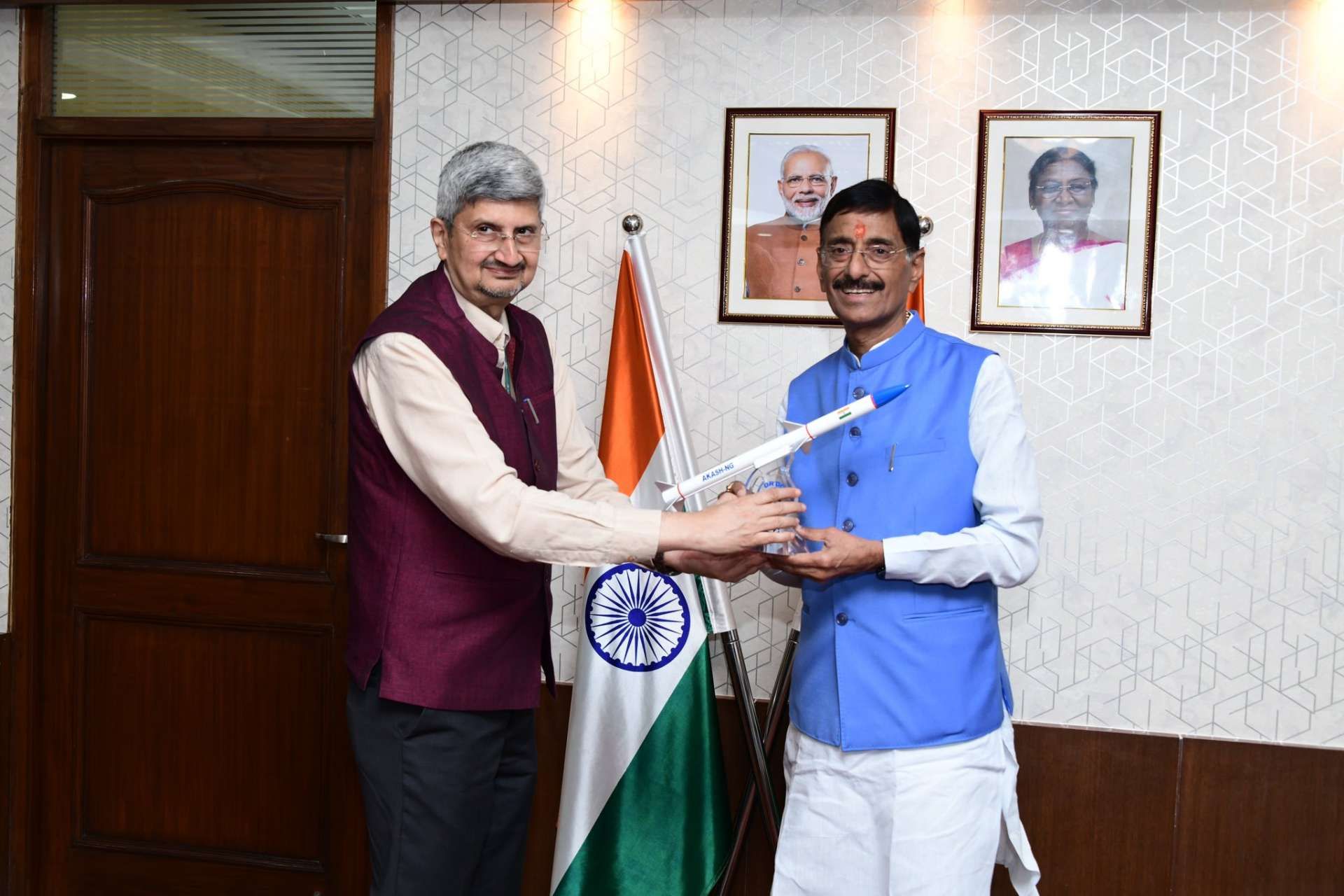Breaking News
India Completes Successful Tests of Phase-II Ballistic Missile Defence System.
On July 24, 2024, the Indian Defence Research and Development Organisation (DRDO) successfully conducted a flight test of its sophisticated Phase-II Ballistic Missile Defence System, featuring the AD-2 endo-atmospheric missile. This flight marks a critical advancement in India's preparedness for network-centric warfare.
Follow Army Recognition on Google News at this link

India AD-2 endo-atmospheric missile (Picture source: Indian MoD)
The target missile, simulating an enemy ballistic missile, was launched at 16:20 from Launch Complex IV in Dhamra. Within minutes, the system's radars, strategically placed on land and sea, detected the threat, activating the Advanced Defence (AD) Interceptor system. The interceptor missile was subsequently launched from Launch Complex III at the Integrated Test Range (ITR) in Chandipur at 16:24.
This flight test, which achieved all set objectives, also demonstrated the prowess of India's indigenous defence technologies. The Phase-II AD endo-atmospheric missile, a two-stage, solid-propellant, ground-launched system, is designed to intercept and neutralize enemy ballistic missile threats in both endo and low exo-atmospheric regions.
Throughout the test, the missile's performance was meticulously monitored via a range of tracking instruments including Electro-Optical Systems, Radar, and Telemetry Stations, spread across various locations, including aboard ships.
An endo-atmospheric missile is designed to operate and intercept targets within the Earth's atmosphere. Unlike exo-atmospheric missiles, which function outside the atmosphere, endo-atmospheric missiles handle engagements within the dense atmospheric layers. These missiles are crucial for missile defense systems, as they are capable of intercepting and destroying incoming ballistic missiles or other airborne threats before they can reach their targets. Endo-atmospheric missiles, such as the AD-2 tested by the Indian Defence Research and Development Organisation (DRDO) on July 24, 2024, are characterized by their high-speed interception capabilities, advanced guidance systems, and robust aerodynamic design to withstand the pressures and temperatures of atmospheric flight. Powered by solid or liquid propellants, these missiles are engineered for rapid acceleration and precise maneuverability, making them essential for modern air and missile defense strategies.
This successful trial underscores the DRDO's capability to defend the nation against high-class ballistic missile threats, particularly those capable of reaching distances up to 5,000 km. The development of this missile system incorporates numerous state-of-the-art technologies crafted by various DRDO labs, highlighting the organization's growing proficiency in indigenous technology.
This flight test represents not only a significant technological leap but also strengthens India's position in modern warfare, ensuring a robust defence mechanism against potential threats.
The Indian Ballistic Missile Defence Programme was launched in 2000 in response to missile threats from Pakistan and China. This dual-layer defence system includes land and sea-based interceptor missiles designed to intercept incoming missiles up to 5,000 kilometers away. The system also integrates a network of early warning and tracking radars, as well as command and control posts, enhancing India's defence capabilities. The initial tests conducted in 2006 and 2007 with the PAD and AAD missiles marked India as the fourth country to successfully develop an anti-ballistic missile system.
Over the years, India has continued to develop this programme in response to increased tensions with Pakistan, especially after the Kargil conflict in 1999. The development was accelerated by the US vetoing India's bid to acquire the Israeli Arrow-2 interceptor in 2002, prompting India to pursue its own missile defence development programme. The programme is divided into phases, with Phase I allowing the interception of missiles up to 2,000 km, and Phase II (extended up to 5,000 km) planned to protect against longer-range missiles.
By 2020, the first phase of the programme was completed, and authorities were awaiting government approval to deploy the missile shield around the national capital, a process expected to take three to four years post-approval. Recent developments include tests of the AD-1 and AD-2 missiles, designed to intercept missiles at hypersonic speeds and at altitudes ranging from the endo-atmosphere to the lower exo-atmosphere. These missiles are crucial components of the defence system to counter future sophisticated threats.
On July 24, 2024, a successful test of the Phase-II Defence System was conducted, validating the entire network-centric weapon system, including interceptor missiles, mission control centers, and long-range detection and communication systems. This success demonstrates India's ongoing commitment to strengthening its national defence capabilities and its independence in strategic defence technology.

























